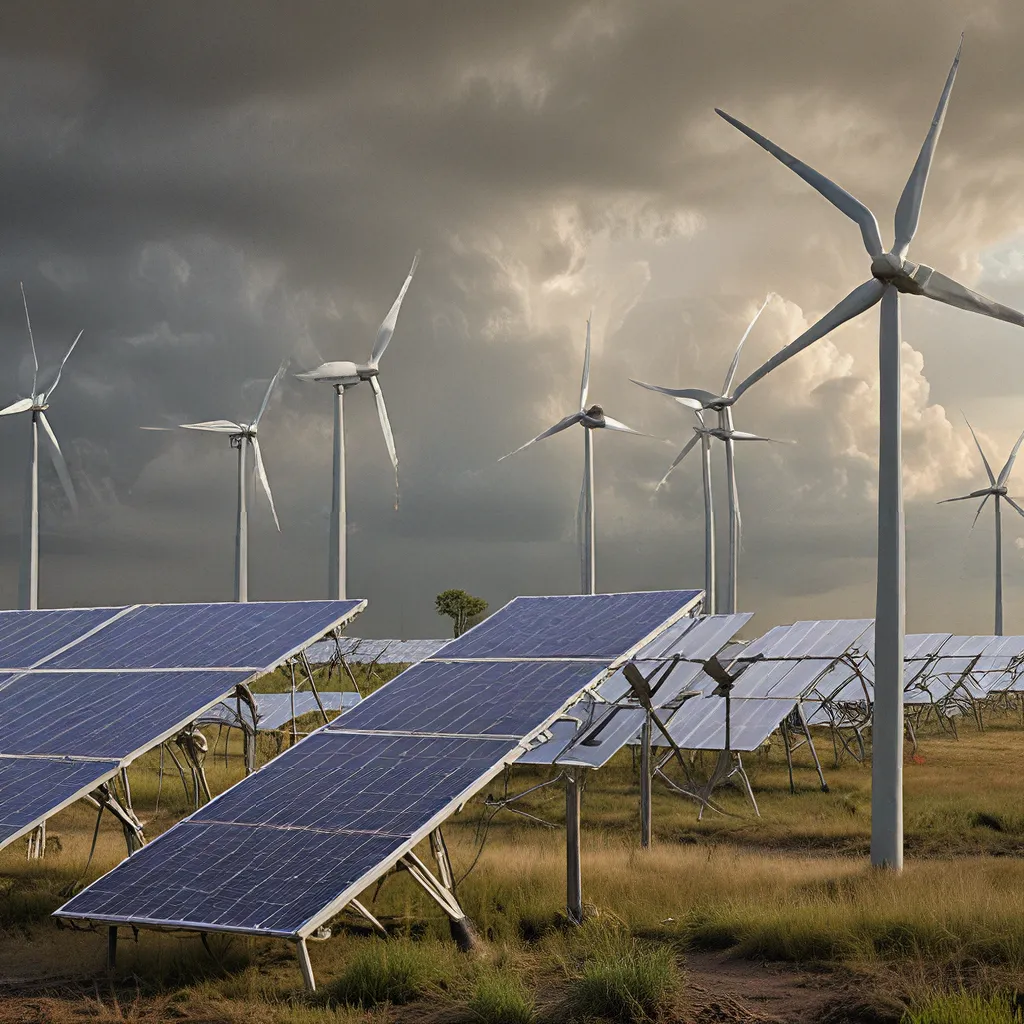
Imagine a world where the lights never go out, even when disaster strikes. A future where our homes and communities are powered by renewable energy sources that not only reduce our carbon footprint but also bolster our resilience in the face of extreme weather events. This is the vision that’s driving the Biden-Harris administration’s historic investments in climate resilience and clean energy technology.
Unlocking the Power of Renewable Energy
As the frequency and severity of natural disasters continue to increase due to climate change, it’s becoming increasingly clear that we need to rethink the way we build and power our communities. That’s where renewable energy comes into play. FEMA is now funding net-zero energy projects, including solar panels, heat pumps, and energy-efficient appliances, through its largest grant program: Public Assistance.
This is a game-changer for communities looking to not just rebuild after a disaster, but to rebuild in a way that sets them up for long-term resilience. You see, renewable energy systems like solar and wind are less prone to disruption during extreme weather events. And when the grid goes down, these self-sufficient systems can keep the lights on and the critical infrastructure running.
“Whenever and wherever a community is impacted by a natural disaster, the Department of Homeland Security is there to help recover and build back stronger,” says Homeland Security Secretary Alejandro N. Mayorkas. “Now that work will include incorporating smart net-zero energy techniques and technology — like solar panels and heat pumps — into the rebuilding of critical infrastructure like hospitals and fire stations.”
Building Back Stronger with Resilience in Mind
But it’s not just about the power sources — it’s also about how we construct our buildings and infrastructure. That’s why HUD’s ‘Build for the Future’ program is empowering local communities to undertake initiatives focused on climate resilience, energy efficiency, and environmental justice.
“We need to make sure no one is left behind in the clean energy transition,” says Tsisilile Igogo, the DOE Office of Policy’s lead supply chain coordinator. “This means that in every link of the supply chain, we’re weighing social, economic, and environmental impacts on underserved communities within the US and beyond its borders.”
Through this program, communities can access funding and guidance to implement strategies like passive heating and cooling, on-site renewable energy generation, and energy storage systems. These innovations not only reduce energy costs and greenhouse gas emissions but also ensure that buildings can maintain comfort and safety, even in the face of power outages or extreme weather.
Strengthening the Clean Energy Supply Chain
Of course, transitioning to a more resilient, renewable-powered future doesn’t happen overnight. It requires a robust and reliable supply chain to support the massive scale-up of clean energy technologies. The Department of Energy and researchers at the National Renewable Energy Laboratory (NREL) are working to strengthen America’s clean energy supply chains, addressing vulnerabilities and ensuring that domestic manufacturing can keep up with the growing demand.
“Reliance on imports can make the clean energy industry vulnerable to production shortages, trade disruptions, and natural disasters,” explains Jill Engel-Cox, NREL’s Energy Systems Integration Research Advisor. “We need to speed up the manufacturing of clean energy technologies while making the entire cradle-to-grave process equally sustainable.”
Through initiatives like the Federal Buy Clean program and the new Office of Manufacturing and Energy Supply Chains, the Biden-Harris administration is laying the groundwork for a more resilient, homegrown clean energy industry. And with NREL’s world-class research and analysis, they’re identifying the policy actions and strategic investments needed to make it happen.
Powering a Brighter, More Resilient Future
As I reflect on the path ahead, I can’t help but feel a sense of cautious optimism. The challenges we face are daunting, but the solutions are within our grasp. By embracing renewable energy and building resilient infrastructure, we can not only protect our communities from the ravages of climate change but also create a more sustainable, equitable, and prosperous future for all.
So, I encourage you to explore the Plug N’ Save Energy Products website and learn more about the renewable energy solutions that can help you and your community weather any storm. Together, we can build a stronger, more resilient future – one powered by the endless energy of the sun, wind, and the human spirit.